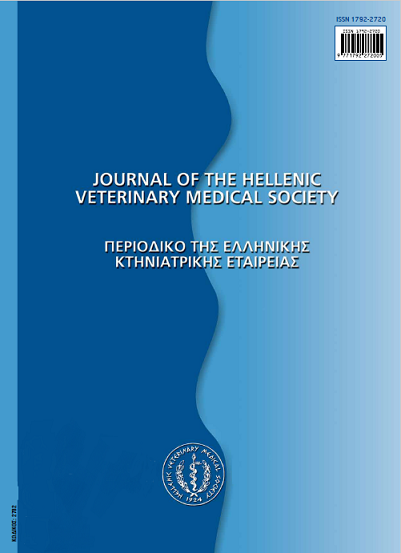Carry over effect in pesticide residues analysis by LC - MS/ MS
Abstract
The Carry over effect, i.e. the appearance of a peak in the chromatogram of a blank analysis due to sample remaining from the previous analysis, was studied. The study was conducted for pesticide residues analysis by LC-MS/MS. In total 128 pesticides that belong to 13 different chemical classes were analyzed in order to investigate the cases that the effect is significant; i.e. a peak higher than 1% of the peak of the previous chromatogram appears. Carry over was found for 32 of the 128 studied pesticides (25%), at concentration levels between the LOD and 0.167 μg/mL. For 28 out of the 32 substances, more than two injections of a blank sample were required, as to reduce the effect significantly. Compounds presenting Carry over effect were mainly non-polar with logkow values between 4 and 7, characterized with very low water solubility, between 0.001 mg/L and 2 mg/L. On the contrary, the vapor pressure did not seem to be obviously related to the effect, as the substances presenting Carry over had various vapor pressure values, from 10-12 to 0.2 mP.
Article Details
- Come citare
-
MILIADIS, G., MALATOU, P., TSIANTAS, P., VRETTAKOU, A., EVANGELOU, V. I., ANAGNOSTOPOULOS, C., & SIRAGAKIS, G. (2018). Carry over effect in pesticide residues analysis by LC - MS/ MS. Journal of the Hellenic Veterinary Medical Society, 68(4), 607–612. https://doi.org/10.12681/jhvms.16059
- Fascicolo
- V. 68 N. 4 (2017)
- Sezione
- Research Articles

Questo lavoro è fornito con la licenza Creative Commons Attribuzione - Non commerciale 4.0 Internazionale.
Authors who publish with this journal agree to the following terms:
· Authors retain copyright and grant the journal right of first publication with the work simultaneously licensed under a Creative Commons Attribution Non-Commercial License that allows others to share the work with an acknowledgement of the work's authorship and initial publication in this journal.
· Authors are able to enter into separate, additional contractual arrangements for the non-exclusive distribution of the journal's published version of the work (e.g. post it to an institutional repository or publish it in a book), with an acknowledgement of its initial publication in this journal.
· Authors are permitted and encouraged to post their work online (preferably in institutional repositories or on their website) prior to and during the submission process, as it can lead to productive exchanges, as well as earlier and greater citation of published work.



